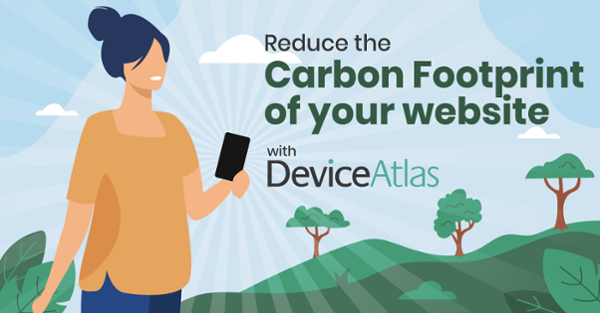
The
UN’s 26th Climate Change Conference of the Parties (COP26) in Glasgow this month provides a reminder of the
Intergovernmental Panel on Climate Change (IPCC)’s “starkest warning yet” of “major inevitable and irreversible climate changes.” These warnings have lead many organizations to review their Corporate Social Responsibility goals to incorporate a focus on climate change. This blog post looks at the nature of the internet’s carbon emissions and discusses how organizations can work with DeviceAtlas’ solutions to decrease the carbon footprint of your websites.
How Sustainable is your Website?
How can DeviceAtlas help?
DeviceAtlas’ device identification can help your organization reduce your website’s carbon footprint. Our high speed server-side APIs identify the device and return device properties in real-time and device-appropriate content/ads are served to the user while providing accurate device reporting.
By designing websites for specific devices using adaptive rather than responsive web design practices, you can decrease the bandwidth and weight of your web pages.
This approach has the added benefit of resulting in improvements in usability, accessibility and conversion rate. A study from the
Nielsen Norman Group shows that page speed directly impacts user experience and conversion rate. By reducing the file size of your web pages through compressing images and using the appropriate file formats, your website will load faster and in turn improve user experience.
As a very rough guide, a typical website has 50% bot traffic. The remaining 50%, that is actually consumed by human readers, typically is split
50/50 between desktop and mobile users.
The page weight appropriate to serve to mobile users (who have constrained bandwidth, screen capabilities and processing power) would be less than half of what is served to desktop users. Optimising images alone typically yields a greater reduction than this.
Based on these assumptions, a saving of 25% of server count and bandwidth is made, which translates to material carbon footprint reduction in addition to direct cost savings.
Conclusion
A sustainable website does not just fight against climate change, it also means your pages will load faster and provide a more accessible experience to your users.
Sign up for a free trial now to optimize your users’ experiences of your websites while contributing to your Corporate Social Responsibility goals.


